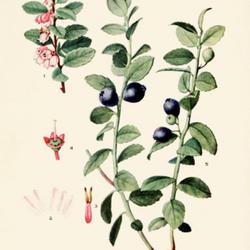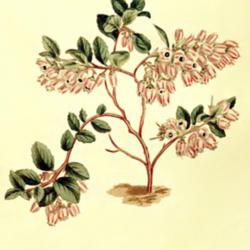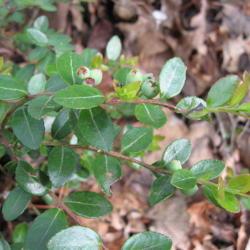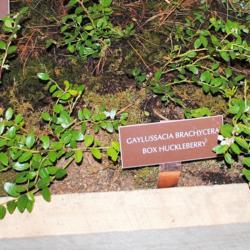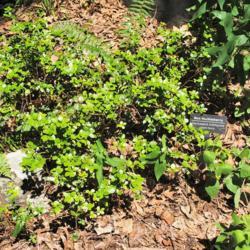| Plant Habit: | Shrub |
| Life cycle: | Perennial |
| Sun Requirements: | Full Sun to Partial Shade Partial Shade to Full Shade |
| Water Preferences: | Mesic Dry Mesic Dry |
| Soil pH Preferences: | Very strongly acid (4.5 – 5.0) Strongly acid (5.1 – 5.5) Moderately acid (5.6 – 6.0) Slightly acid (6.1 – 6.5) |
| Minimum cold hardiness: | Zone 5a -28.9 °C (-20 °F) to -26.1 °C (-15 °F) |
| Maximum recommended zone: | Zone 8b |
| Plant Height: | 18 inches |
| Plant Spread: | 3 feet, will colonize a large area over time |
| Leaves: | Good fall color Evergreen Semi-evergreen |
| Fruit: | Edible to birds |
| Fruiting Time: | Late summer or early fall |
| Flowers: | Showy Blooms on old wood |
| Flower Color: | White Bi-Color: Pink and white |
| Bloom Size: | Under 1" |
| Flower Time: | Late spring or early summer |
| Underground structures: | Rhizome |
| Uses: | Provides winter interest Groundcover |
| Edible Parts: | Fruit |
| Eating Methods: | Raw Cooked |
| Wildlife Attractant: | Bees Birds Butterflies |
| Resistances: | Tolerates dry shade |
| Propagation: Seeds: | Stratify seeds: warm 30 days, 50 F for 30 days, then cold for 50 days or so Sow in situ Other info: not self fertile, needs another clone to set fruit |
| Propagation: Other methods: | Division Stolons and runners |
| Pollinators: | Various insects |
| Containers: | Suitable in 3 gallon or larger |
| Miscellaneous: | Monoecious Endangered: in Pennsylvania and Maryland |
